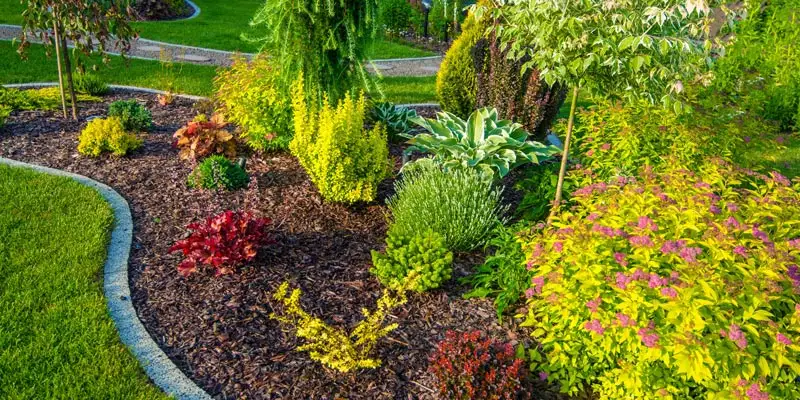The Facts About Landscape Design Uncovered
The Facts About Landscape Design Uncovered
Blog Article
Landscape Design Things To Know Before You Get This
Table of ContentsNot known Details About Landscape Design The Definitive Guide for Landscape DesignThe Only Guide to Landscape DesignLandscape Design Can Be Fun For EveryoneLandscape Design Fundamentals Explained
Formal design motif. Credit Rating: Gail Hansen, UF/IFAS The yard is an extension of the home where a range of activities take area. A lawn can typically be split right into three locations: public (the front lawn), private (the garden), and service (typically the side lawn). The place of activity locations depends largely on the type of location, the size of space required, the type of activity, and the desired closeness to various other tasks and structures.The outside wall of the residence frequently serves as the initial wall surface or starting factor of an outdoor area. Inappropriate usages need to be divided, and associated tasks, such as food preparation and eating, should be created to make the backyard extra efficient and pleasurable. When utilizing hardscape to produce spaces, make use of building product comparable to that used in your house for connection from your home into the yard.
Linked rooms. Credit Rating: Gail Hansen, UF/IFAS Making use of similar hardscape functions and duplicating plants pulls the eye around the yard. Crucial factors along the means can be stressed with plantings or attributes that draw interest and urge activity in a certain direction. Relocating along the course takes a person from one location to the next and enables the individual to have a variety of experiences.
Some Known Facts About Landscape Design.

For mental convenience plants are used as physical or suggested obstacles for personal privacy and safety and security. Physical obstacles block both the view and access to a room and consist of fences, wall surfaces and plant hedges. Suggested barriers, generally low growing plants, obstruct accessibility however not the sight (Figure 9). Various other functions of plants include cleansing the air, avoiding disintegration and soil loss, retaining moisture in the dirt, and returning organic matter to the soil.
Physical and indicated obstacles. Debt: Gail Hansen, UF/IFAS For these reasons, the kinds of plants to be utilized (such as trees, bushes, or groundcovers) need to be picked in the beginning of preparation (Landscape Design). Plant types are chosen for their functional abilities so that their future function and required room can be taken into consideration at the same time

Getting My Landscape Design To Work
Each plant mass remains in front of, behind, or beside, an additional mass. Number 11. Straight plant layers. Credit History: Gail Hansen, UF/IFAS Number 12. Upright plant layers. Landscape Design. Debt: Gail Hansen, UF/IFAS Duplicating plants within a mass and duplicating masses with comparable plants ties the yard with each other. The specific plant characteristics need to be thought about to efficiently layer and mass plants.
All plant compositions begin with the primary framework plants, the huge, primarily evergreen history plants-such as the trees and large bushes. These plants separate or enframe areas, control the size of the space, and give the beginning factor for selecting the suitable features of the second layer, midground plants, for massing and infill.
Vital factors discover this in the garden must be highlighted by the use one-of-a-kind plants, unique structures, or garden accessories. Noting thresholds or entryways to areas can be made with gates, arbors, and actions, or with the use of distinct and vivid plants. The kind and/or style motif of the yard will certainly usually help identify the important factors and how they need to be highlighted.
Various other vital places in the yard are focal factors, which is used to aesthetically arrange a landscaped area. Different point of views or viewpoints can disclose various make-ups in the landscape that might call for a selection of focal points.
What Does Landscape Design Mean?

Number 13. Plant types. Credit Rating: Gail Hansen, UF/IFAS After kind, texture is the next leading function of a plant; rugged, medium and fine textures can be utilized for contrast and emphasis in the landscape. Form and structure both trump shade in the garden for the majority of the year. Throughout specific seasons, shade will be the most visible attribute of the yard.
The positive fragrance of plants, the audio of wind in the trees, the audio and texture of water, and the colors and textures of sculptures, pots and yard furnishings all include in the experience of discover here the yard. One detail that is usually overlooked is the effect of light on the visual appeals of the plants.

Indicators on Landscape Design You Need To Know
It is necessary to understand the eventual fully grown size of plants so they can be put in the right area and spaced properly when they are installed. Providing plants room to expand is a difficulty due to the fact that the typical mature size is typically based upon ideal growing problems and the environmental problems of a site might trigger a plant to expand useful content larger or remain smaller.
Report this page